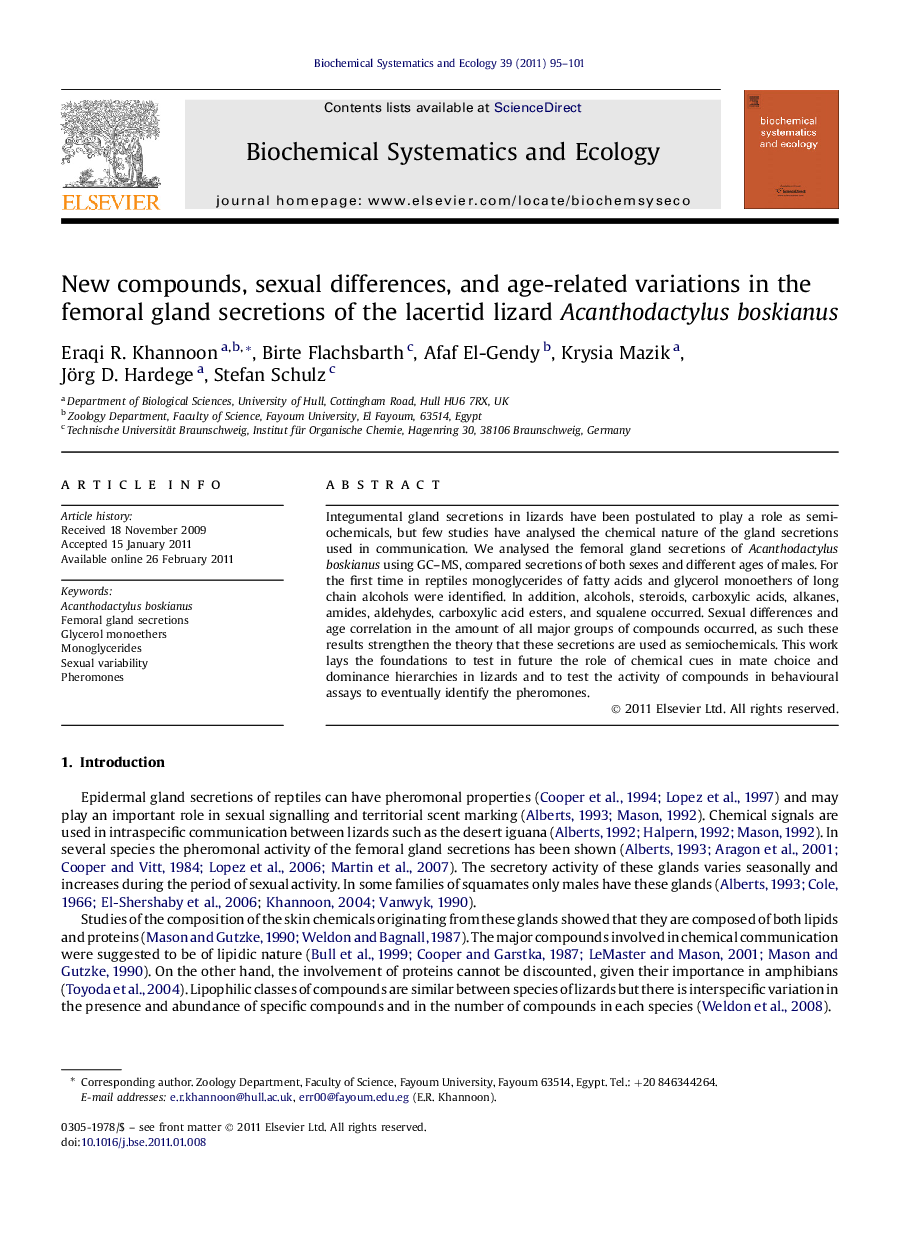| Article ID | Journal | Published Year | Pages | File Type |
|---|---|---|---|---|
| 1354340 | Biochemical Systematics and Ecology | 2011 | 7 Pages |
Integumental gland secretions in lizards have been postulated to play a role as semiochemicals, but few studies have analysed the chemical nature of the gland secretions used in communication. We analysed the femoral gland secretions of Acanthodactylus boskianus using GC–MS, compared secretions of both sexes and different ages of males. For the first time in reptiles monoglycerides of fatty acids and glycerol monoethers of long chain alcohols were identified. In addition, alcohols, steroids, carboxylic acids, alkanes, amides, aldehydes, carboxylic acid esters, and squalene occurred. Sexual differences and age correlation in the amount of all major groups of compounds occurred, as such these results strengthen the theory that these secretions are used as semiochemicals. This work lays the foundations to test in future the role of chemical cues in mate choice and dominance hierarchies in lizards and to test the activity of compounds in behavioural assays to eventually identify the pheromones.
► We analyse femoral gland secretions of the lizard Acanthodactylus boskianus. ► We compare secretions of different sexes and different male ages. ► Monoglycerides and Glycerolmonoethers are found in the secretions. ► Sexual and age differences exist in the secretion components. ► The secretions can be used as semiochemicals and pheromones.
